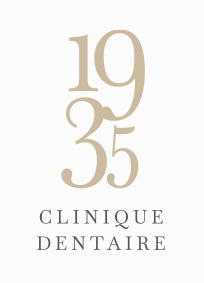Orthodontics is a dentistry specialty that improves dental appearance and function. It can be used to help people who suffer from aesthetic imperfections, poor dental alignment and jaw problems.
From traditional braces and Invisalign to maxillofacial surgery, there are many ways to realign your smile. Your orthodontist can advise you on which treatment best suits your situation. Find out more in this article!
Why undergo orthodontic treatment?
Orthodontic treatments adjust the position of the jaws and teeth to improve appearance and function.
Dental and jaw alignment affects facial symmetry and appearance, which are important to many people. Orthodontic treatment can correct alignment problems to help you smile with confidence.
Misalignment, also known as malocclusion, can cause a variety of problems above and beyond aesthetic concerns. Headaches and difficulty chewing can affect digestive function in the long term, and sleep disorders such as insomnia and sleep apnea come with their own sets of difficulties and complications.
Types of orthodontic treatment
Malocclusions are usually detected during regular dental checkups. The treatment recommended will depend on the type of malocclusion and its severity.
Find out about the most common types of orthodontic treatment below.
Aligners
Invisalign appliances are an effective and comfortable way to improve dental alignment. They are transparent and discreet, making them very popular with patients.
The Invisalign treatment corrects the position of the teeth, improves chewing function and resolves aesthetic problems caused by dental misalignment.
Transparent braces
Braces used to be made of metal, but nowadays, near-transparent ceramic is used. The appliance blends in with the colour of the teeth for an aesthetically-pleasing, natural look.
Transparent ceramic braces are popular with those who don’t want their orthodontic appliance to be visible. The braces are so unobtrusive that many adults are now agreeing to the treatment.
Self-ligating braces
Unlike traditional braces, self-ligating braces use a sliding mechanism instead of elastics to secure the archwire to the brackets.
The mechanism allows for better oral hygiene while still improving the position of the teeth.
Maxillofacial surgery
If your jaws are severely misaligned, your dentist may recommend maxillofacial surgery.
The main purpose of the surgery is to improve jaw function. The goal is to make chewing easier and eliminate the need for the muscles to compensate for the misalignment. The appearance of the face and smile will improve considerably as well.
Your dentist will be able to tell you if maxillofacial surgery is needed.
How long does orthodontic treatment last?
Orthodontic treatment takes 18 to 22 months on average.
That being said, some orthodontic problems and dental emergencies are very complex and can take considerably longer to address. In such cases, treatment may last 30 months or more.
For more information about how long your treatment will take, talk to your dentist or orthodontist.
The dentists and orthodontists at Clinique Dentaire 1935 are here to help!
Orthodontics is a dentistry specialty that treats dental and jaw misalignment in order to improve oral health. There are several different types of orthodontic treatment. The treatment used will depend on the medical needs of the patient in question, and the cost will vary based on the type of treatment needed and its duration.
If you would like to find out more about the cost of treatment or consult a dentist for more information, contact the experts at Clinique Dentaire 1935. They will be able to advise you on the treatment that best suits your needs.
